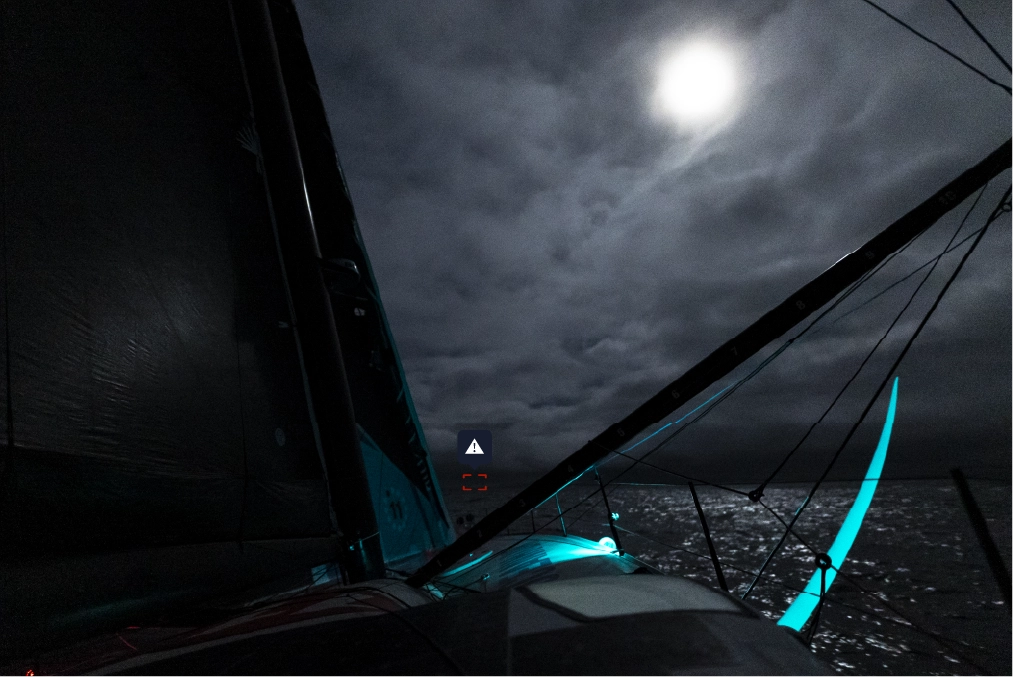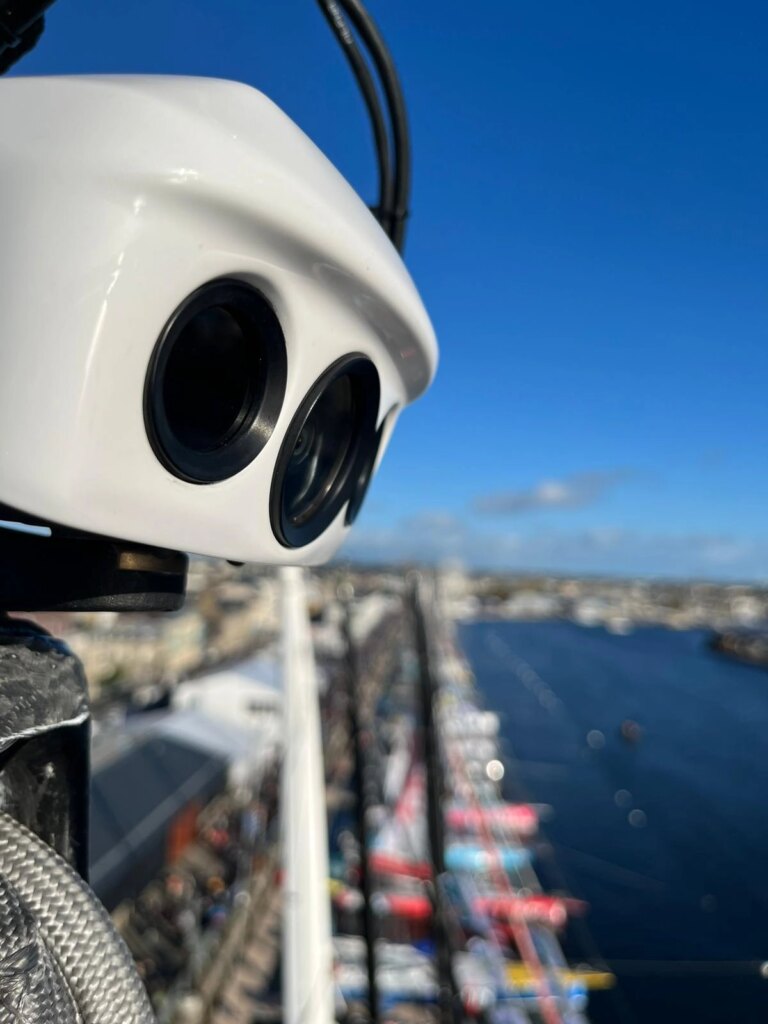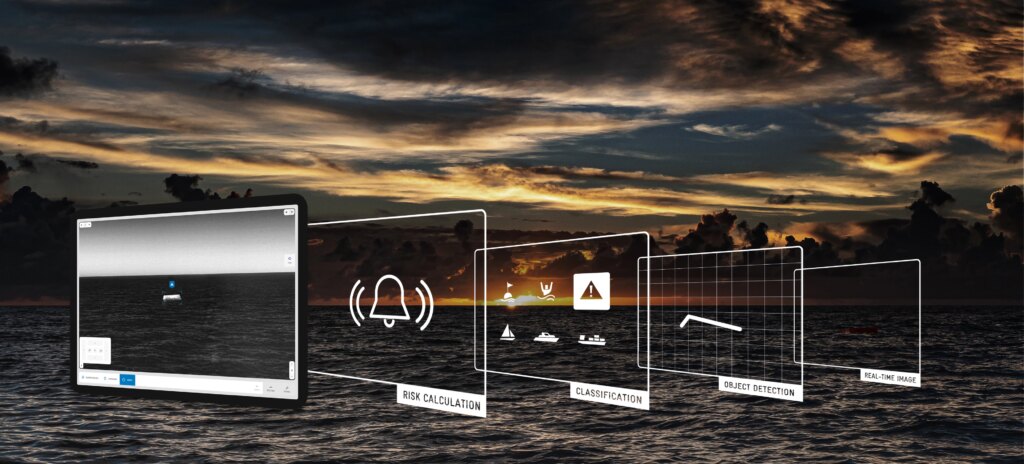Home » Anti Collision Technology in Vendée Globe

This will be the second edition of the Vendée Globe in which SEA.AI will be used on the IMOCAs.
A major issue with sailing singlehanded is being able to maintain a constant watch, for shipping, other yachts and the multitude of other items in the water which can represent a potential collision threat. Until recently IMOCAs have been equipped with two principle electronic aids for this:
Radar and AIS displays superimposed over an electronic chart, in turn showing land, underwater hazards, buoys, beacons and other navigational marks, represents a powerful tool, but it is far from infallible. While it will pick out many potential threats there remains numerous instances when it won’t.

SEA.AI aims to fill this gap in an IMOCA’s anti-collision arsenal by harnessing the very latest in artificial intelligence and machine vision technology. It comprises a lightweight, masthead-mounted camera array that includes both daylight and thermal cameras enabling it work day or night.
Images from these video feeds are then compared, pixel by pixel, with SEA.AI’s forever growing, forever learning database of ‘objects’ its users have encountered since the system was introduced in 2018.
This database includes everything from logs and semi-submerged containers to all manner of other miscellaneous flotsam, plus buoys, small vessels such as local fishing boats, icebergs etc. It now includes more than 10 million ‘objects’ from different angles, light conditions and sea states (including the dataset acquired from SEA.AI users in the last Vendée Globe).
SEA.AI then provides information to the skipper about the collision risk and whether or not avoiding action should be taken. On fully crewed yachts, SEA.AI’s thermal camera is invaluable in man overboard incidents, especially at night.

Aside from its safety features, SEA.AI also provides a vastly improved ‘look-out’ for skippers. You no longer need to have a crewman climb up to the ‘crow’s nest’. Instead using its cameras located at the masthead SEA.AI increases the range a skipper can see ahead from the boat to the horizon line – day or night.
For the 2024-25 Vendée Globe 25 IMOCAs are fitted with SEA.AI.
The technology has already proved itself:
“During the Retour à la Base in December 2023, I was in the middle of the Atlantic at night. The boat was going fast, and all of a sudden, an alarm started beeping. I was in my bunk when it began, softly at first, but it quickly got louder and more urgent. So, I jumped out, and by the time I looked at the screen and understood what was happening, I found myself facing a cargo ship directly in my path. I just had enough time to avoid the ship and steer around it. It had no lights and no AIS. Without SEA.AI, I definitely would have crashed into it, and that would have been a disaster. Today, I can’t really imagine sailing on an IMOCA without the SEA.AI system. It's truly exceptional in terms of safety. It provides a much higher level of peace of mind compared to before when we were always stressed about a potential collision. Now, we have an eye watching over us, one that is tireless and alerts us when danger is near. Honestly, it’s an indispensable safety feature on board an IMOCA today.”
Yoann Richomme, Team Paprec Arkéa
“Off the Breton coast weather buoys were deployed but were not yet marked on the chart. An alarm prompted us to quickly jump on deck, change course, and then sail past the huge steel buoy that would have otherwise severely damaged our boat. I can recommend SEA.AI. It works. It is simple. It is innovative and modern. It can also be used on a small iPads or on an onboard computers. It is truly a modern technology for everyone that can significantly enhance safety.”
Boris Herrmann, Team Malizia
“During the last Transat en Double when François Gabart and Tom Laperche aboard the SVR Lazartigue trimaran were off the coast of Brazil, several small fishing boats were avoided thanks to the SEA.AI camera. These boats were not visible on the radar and did not have AIS. The only way to spot them was through the camera, which alerted us to the danger of a collision. Today, SEA.AI is an absolutely essential solution on boats, just like AIS and radar. It's something that is activated as soon as the boat leaves the dock and is only turned off when the boat returns.”
Jean-Marie Clément, Electronics specialist, Mer Concept, MACIF
We’re excited to announce the release of SEA.AI Software Update v3.13, bringing major improvements to object detection, classification, and collision avoidance.
We are proud to announce that our award-winning Watchkeeper system has been nominated for the DAME Design Awards at the upcoming METSTRADE show.
We’re excited to make our Australian debut at the Sydney International On-Water Boat Show in Cockle Bay, Darling Harbour, from November 13–16. Join us at Booth TP8 for live demos of Watchkeeper, our award-winning AI-powered maritime vision system.